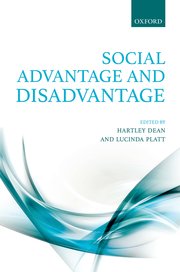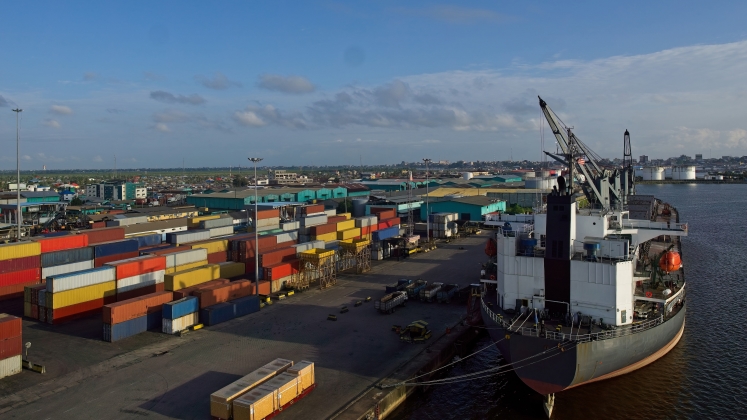Social Advantage and Disadvantage, edited by Hartley Dean and Lucinda Platt, explores these two concepts as necessarily relational terms, whereby any attempt to conceptualise disadvantage must be interwoven with an understanding of how relative advantage is constructed. Examining advantage and disadvantage across the life course as it relates to family, education, work, old age and income with particular focus on the UK, this book guides the reader through complex structures of inequality, making it a key read for students, scholars and policymakers, writes Michele Fenzl.
Social Advantage and Disadvantage. Hartley Dean and Lucinda Platt (eds). Oxford University Press. 2016.
 With few exceptions, advanced economies have experienced a rise in income inequality. Its deep impacts on both economic equity and efficiency have transformed inequality, in the words of the World Economic Forum, into ‘one of the key challenges of our time’, and pushed the United Nations to include its reduction within the seventeen global goals of the 2030 Agenda for Sustainable Development. Despite the staggering significance of inequality for the future of our economies – and our democracies – we still know very little about its causes and consequences. This lack of knowledge is particularly worrying since ‘if inequalities […] resulted purely from hard work and effort, or even from the good fortune of natural talent, there might be less reason for concern’ (85). Instead, ‘social policies may […] have been implicated in shaping or perpetuating some forms of social (dis)advantage’, and – conversely – they ‘can play a vital role in ameliorating or abating it’ (vi).
With few exceptions, advanced economies have experienced a rise in income inequality. Its deep impacts on both economic equity and efficiency have transformed inequality, in the words of the World Economic Forum, into ‘one of the key challenges of our time’, and pushed the United Nations to include its reduction within the seventeen global goals of the 2030 Agenda for Sustainable Development. Despite the staggering significance of inequality for the future of our economies – and our democracies – we still know very little about its causes and consequences. This lack of knowledge is particularly worrying since ‘if inequalities […] resulted purely from hard work and effort, or even from the good fortune of natural talent, there might be less reason for concern’ (85). Instead, ‘social policies may […] have been implicated in shaping or perpetuating some forms of social (dis)advantage’, and – conversely – they ‘can play a vital role in ameliorating or abating it’ (vi).
Social Advantage and Disadvantage, edited by Hartley Dean and Lucinda Platt, addresses the challenge of reviewing decades of research on the causes and consequences of inequality through a distinctively holistic approach. By focusing on social advantage and disadvantage, the book captures the idea that if inequalities did not result in an advantage for some and disadvantage for others, it would be less pressing to address them with policies.
Given the broad nature of these two terms, Part I of the book is dedicated to conceptualising what (dis)advantage means. Part II then progresses with an analysis of advantage and disadvantage ‘from a life course perspective’ (vi): from birth through to education and the job market and into old age. Part III then concentrates on crosscutting topics, including the effects of gender, age and citizenship on inequalities; the relationship between geography, religion and advantage; and the impact of crime and punishment on disadvantage. If the breadth of these topics creates a tour de force for the reader, it proceeds from the premise that ‘we cannot properly understand the means by which disadvantage is created and sustained without also engaging with how it articulates with the perpetuation and maintenance of advantage’ (343). Chapter Fourteen then draws the conclusions, reflecting on the importance of conceiving inequalities both diachronically, as in Part II, and intersectionally, as in Part III.
 Image Credit: (Florian Plag CC2.0)
Image Credit: (Florian Plag CC2.0)
Beyond providing the conceptual framing for the subsequent analysis, the introductory chapters convey the key message of the book: i.e. that (dis)advantages – or inequalities – are intrinsically social concepts. There can only be an advantaged group if there is a disadvantaged one. The relativity of the concept is also drawn by the general definition of disadvantage as ‘the consequence of a process by which some form of relative advantage has been selectively conferred or attained’ (v). This conceptualisation as a social phenomenon is fundamental to proposing policies aimed at reducing inequalities: we must ‘focus on the systemic processes by which advantage may accrue to some and be denied to others’ (19).
What remains less clear is the dimensionality of the concept. If Chapter Two analyses some benefits and limitations of multidimensional approaches, it is unclear whether some dimensions of (dis)advantage – or proxies for it – have higher relevance, and whether some should instead be considered a cause or an effect of disadvantage. Since resources can be conceptualised in different ways – at the least as economic, cultural and social, as highlighted in Chapter Four – the reader would benefit from a more detailed discussion of the relationship between the particular – different resources – and the whole – (dis)advantage. What the first section of the book instead perfectly accomplishes is to show the conceptual complexity of disadvantage.
This complexity becomes even more apparent with the discussion of how inequalities are created and perpetuated through time. With the contributions particularly concentrating on the United Kingdom, the reader is guided through a disillusioning analysis of how much of a role that social constructs, such as family, education policies, the job market and pension policies, have played in shaping the U-turn of inequalities that we experience in the current era. This is an accomplishment that makes Social Advantage and Disadvantage an incredibly important read. Unless we account for the complexity of the social structures that bring inequalities into being, we will fail to design policies that will ameliorate the persistence of advantage: ‘although social policy has often treated poverty as the main feature of the income distribution of interest, recent distributional trends […] suggest that other features demand as much attention and analysis’ (157).
At the same time, Part III uncovers how inequalities have not only been perpetuated through time, but also among groups. If, for instance, the role of women has substantially changed in advanced economies, gender and its interaction with local cultures and fortunes – such as city or regional inequality levels or ethnic group differences – remain a key determinant of disadvantage. Similarly, policies toward ethnic groups and migrants shape forms of advantage and disadvantage that cannot be ignored, as Chapters Twelve and Thirteen show. For instance, looking at EU-member countries, non-citizens not only have higher risks of unemployment, but also, once in work, of being under temporary or informal (and often unprotected) contracts, which commonly entail excessive working hours. These job market disadvantages of non-citizens also result in higher poverty rates.
Social Advantage and Disadvantage thus guides the reader through the complexity of inequalities that shape our world, offering a text that is fundamental for anyone interested in better understanding advantage and disadvantage. The chapters review decades of research from prominent scholars who show how much policies and social constructs have determined the degree of inequality that we currently experience. At the end of the book the reader is made aware that disadvantage is not simply a state of nature that we ought to accept, but is in large part a product of policies and social norms. This accomplishment alone makes Social Advantage and Disadvantage a key read for students in sociology, political science, public policy and economics, and an even more important one for the policymakers that will need to address and reduce the inequalities of our countries.
Michele Fenzl is a MPhil/PhD student in the Department of Government of the University of Essex. He holds degrees from the University of Bologna and University of Essex, and has previously held visiting positions at the University of Sussex and King’s College, London. His PhD thesis studies the comparative political economy of income inequality and redistribution, and adopts quantitative methods to analyse the intersections between economic and political inequality.
Note: This review gives the views of the author, and not the position of the LSE Review of Books blog, or of the London School of Economics.






